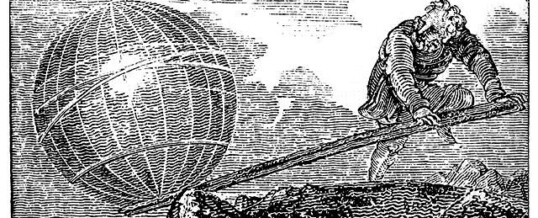
Republished from: BloombergView
By Noah Smith
In an earlier article for Bloomberg View, I described a danger facing investors: the put-option illusion. This is when investors, who tend to extrapolate too much from recent trends, are fooled into thinking that a string of good returns means an investment has very little risk. Often the risk is just lurking way out in the tail of the distribution, ready to jump out and crush your wealth.
In that article, I also talked about some research by Vikas Agarwal and Narayan Naik from the mid-2000s showing that many hedge funds had returns that looked a lot like selling out-of-the-money puts on the Standard & Poor’s 500 Index. I suggested that maybe these funds were — consciously or unconsciously — playing to investors’ put-option illusion. But there is another reason for hedge funds to adopt an investment strategy that has many small gains and a few big disastrous losses. As it turns out, this kind of strategy can be used to boost Sharpe ratios.
Sharpe ratios are the most common way that we measure the performance of a fund or other investment. Under some conditions, they are the best measurement of the tradeoff between risk and return. But when you throw options into the mix, Sharpe ratios suddenly have some issues.
In 2004, finance professors William Goetzmann, Jonathan Ingersoll, Matthew Speigel and Ivo Welch published a paper showing exactly how this can be done. The paper is very dense and technical, but here’s the basic idea. Suppose a hedge fund has some investment strategy that involves picking a bunch of stocks. The fund can increase its Sharpe ratio by selling out-of-the-money puts and out-of-the-money calls on its own portfolio. The former means that returns become more consistent, at the cost of running a small risk of very big losses. The latter means that very good returns become less likely, but, again, the average return goes up.
In other words, hedge funds can boost Sharpe ratios by acting like poorly managed insurance companies. The difference is that hedge funds will do it in secret. Imagine if you looked at a flood-insurance company that had sold way too much insurance for way too little, and whose true value as a firm was therefore negative. But suppose all you could see was that it raked in money every year, even if you didn’t understand its business. You might be willing to pay for the stock of that company. But you’d be paying for something intrinsically worthless, and when a flood finally hit, your investment would go to zero.
That, in a nutshell, is what Goetzmann et al. show that hedge funds are able to do. Since many investors can’t see into funds’ strategies and rely mainly on Sharpe ratios to determine the quality of a fund’s performance, they won’t realize that they’re overpaying for shares in basically insolvent insurance companies. This should lead to negative skewness in hedge fund returns — and in fact, Goetzmann et al. find exactly this. Interestingly, they find that mutual funds — which are legally banned from investing in many of the option-like assets available to hedge funds — have performance that is much more accurately captured by Sharpe ratios. This makes a lot of sense.
So this is just one more reason for investors to be more wary of hedge funds.
Skepticism about hedge funds is spreading. Recently, Dan McCrum of the Financial Times wrote a very critical article about the hedge-fund industry, citing a Nomura report and a number of academic papers showing that hedge funds haven’t performed up to snuff:
This paper found that investors in hedge funds received about the same investment return as holding Treasuries between 1980 and 2008, and much less than if they has (sic) just bought stocks.
This one, which found pension funds actually have shown some ability at stock selection, discovered that they are hopeless at picking alternative managers.
And this paper revisiting stylised facts about hedge funds found that most fail, with two-thirds of those funds reporting to databases now dead.
There is a lot more in the article, which is a must-read for any asset manager or pension-fund manager thinking about investing in hedge funds.
A while back, I wrote about how “hedge fund” is just a legal category, which doesn’t imply any special skill on the part of managers, so we shouldn’t expect them to outperform. Goetzmann et al.’s paper, along with the paper by Agarwal and Naik, gives a reason to expect them to underperform in spectacular fashion. It looks like the investment community is starting to catch on to the danger.
To contact the author of this article: Noah Smith at [email protected].
To contact the editor responsible for this article: James Greiff at [email protected].
AUG

About the Author: